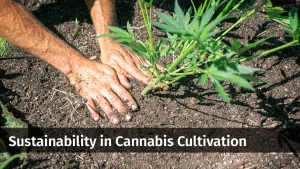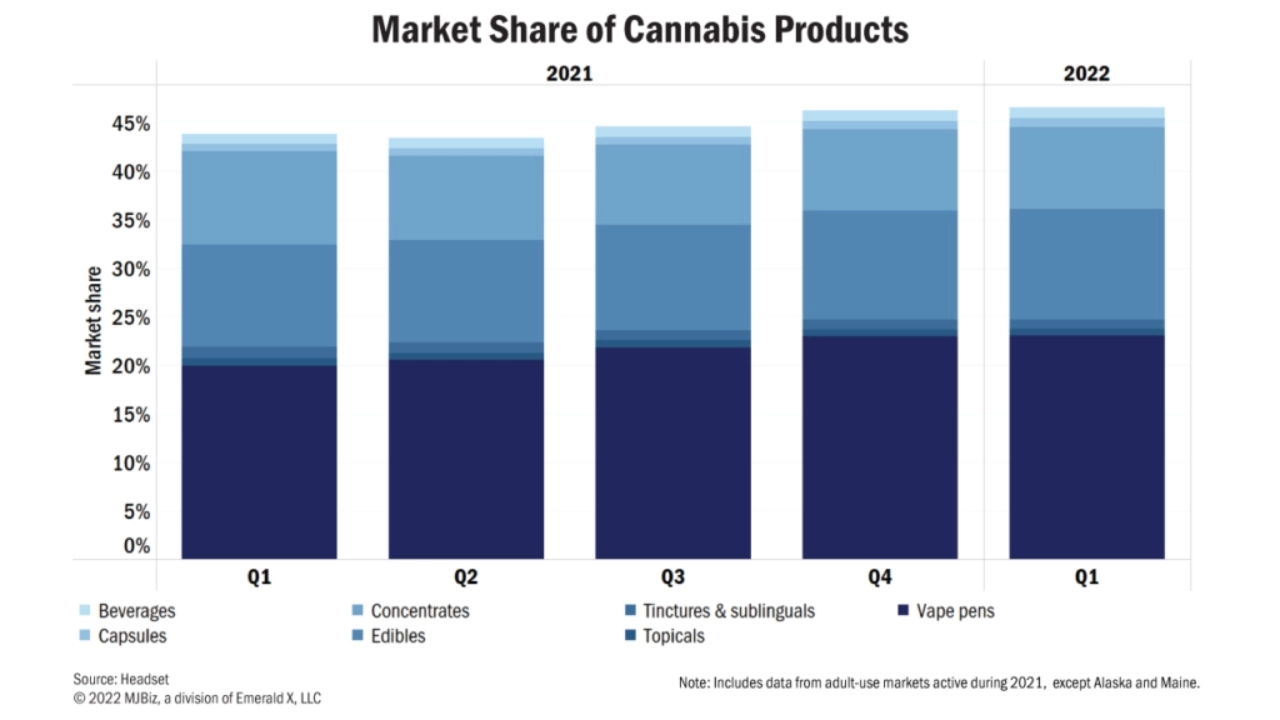 (This is the eighth installment in a series examining sustainability in cannabis cultivation. Read Part 7 here.)
(This is the eighth installment in a series examining sustainability in cannabis cultivation. Read Part 7 here.)
Cannabis cultivators are turning to no-till cultivation methods to limit their carbon footprint, maintain soil health and save thousands of dollars on equipment and fertilizer costs during each grow cycle.
The technique of not tilling soil before planting or after harvest is often part of a larger cultivation system that includes cover crops and is often referred to as living soil, where the planting material is rich with microorganisms that feed the cannabis plants rather than synthetic nutrients.
“A healthy no-till system can require little to no off-site agricultural inputs, conserves water significantly when compared to conventional agriculture and cultivates a healthy soil food web of microorganisms that benefit the greater ecosystem as well as cultivated crops,” said Lauren Fortier, director of cultivation at Theory Wellness, a marijuana company based in Stoneham, Massachusetts.
Moreover, a no-till system doesn’t require sacrificing quality, according to Josh Turner, vice president of cultivation for Green Meadows, a vertically integrated marijuana company in Southbridge, Massachusetts.
In fact, Turner said, no-till farming can lead to higher potency and terpene content once the living soil is established.
“With no-till, you can still meet your production goals and demands and reduce your impact on the environment and your local ecosystem,” he said.
Brandon Curtin, chief cultivation officer at Hudson Hemp, based in Hudson, New York, sees the benefits of eliminating tilling as threefold:
- Increasing biological function by not disturbing the soil, like the floor of a healthy forest.
- Natural bacteria and fungi populations are important for breaking down minerals from the stones, soil and plant debris from cover-crop rotations and work to make these compounds available to plants.
- Each year, with less disturbance and more plant material introduced, the soil cycle begins to feed itself.
“One of the greatest benefits of eliminating tillage is the creation of healthier soil,” said Ryan Douglas, a Florida-based cannabis consultant.
“The reduction of tilling helps to protect the soil’s natural structure and makes it less susceptible to erosion.”
Digging up topsoil releases carbon into the atmosphere, which contributes to greenhouse gases. But no-till techniques avoid that environmental impact.
“By not disrupting the natural structure of the soil, no-till farming could help lower a cannabis company’s overall carbon footprint,” Douglas added.
Long-term savings
That’s all without mentioning the cost savings that cannabis growers can reap by leaving the soil undisturbed.
Rather than requiring large, expensive farm equipment, no-till systems can be maintained with very minimal mechanization, Fortier pointed out.
Instead of expensive tillers, a system of cover crops and basic hand tools can maintain soil structure and aeration, she said.
“Healthier soils mean healthier crops, which can directly impact a grower’s bottom line,” Douglas noted.
The learning curve for entering the cannabis industry is steep. Start with the fundamentals.
MJBiz Cannabis 101 Email Course
A 10-part email course designed to educate new hires and aspiring professionals on the key fundamental areas of the legal cannabis industry, including:
- History of legal cannabis in America
- Overview of plant-touching + ancillary business sectors
- Cannabis finance and investing
- Cannabis marketing and brand building
- Employment + hiring opportunities
- And much more!
Gain a comprehensive understanding of this complex industry with this free resource.
He pointed out how living soils and no-till methods help with pest management. For example, damaging insects and disease pathogens can infect weak plants first.
“A healthy plant is a grower’s first line of defense against crop loss,” Douglas said.
Turner added that growers using no-till and living soil need less added nutrients and don’t have to replace soil or substrate every year, which saves thousands of dollars each grow cycle.
However, no-till, or low-till, farming does take some time to develop, Curtin pointed out. A cannabis grower using this method must build up compost and mulch reserves.
“But, over time, creating no-till beds that are in permanent locations with permanent systems creates a cost that can be spread over many years,” he added.
“No-till farming is just one aspect of the biological tool belt that we use to close loops and save cost in the long run by not relying on fossil fuel-based fertilizer inputs.”
Sustainability benefits
Tilling, digging and overturning topsoil releases carbon into the air as C02.
That is one way commercial agriculture contributes to greenhouse gases and climate change, Fortier said.
“No-till systems instead use crops that sequester carbon into the soil, and because the system is never tilled, that carbon stays there to be used by the living ecosystem in the soil,” she added.
Curtin agreed that no-till farming is a great way to store carbon. Each season, plant matter – which is made of carbon – is composted back into the soil and the cover crops in the winter hold and sequester carbon from the air and from the plant matter.
Aside from the carbon footprint benefits, no-till farming uses less overall water, according to Turner. Plants grown in the living soil system lose less moisture to evaporation and erosion.
Another benefit: Less waste.
Instead of using single-use plastic mulch and drip-tape irrigation that must be bought every year, no-till growers employ natural mulches that break down and add organic matter to the soil.
No-till systems retain water much more effectively than conventionally tilled land, Fortier said.
Weeds still present a challenge
The main drawback of no-till farming is that weeds can still be difficult to control.
“By leaving the natural soil structure intact, farmers inevitably leave the weeds,” Douglas said.
If the soil nutrition is sufficient and water is plentiful, weeds can grow faster than the cannabis, requiring extensive manual labor to remove them, he added.
Pigweed, for example, is a common challenge with no-till systems, according to Turner. His solution: Use a heavy mulch to keep the weeds from taking over.
Ultimately, Fortier advised growers taking this path to stay patient and give it time.
“Although the long-term benefits outweigh the cost over years, it can take a few years of restorative land maintenance to establish a healthy no-till soil system that yields the same as conventional agriculture,” she added.
Bart Schaneman can be reached at bart.schaneman@mjbizdaily.com.





